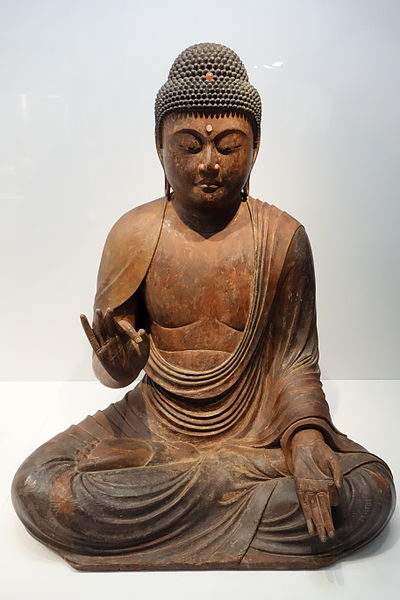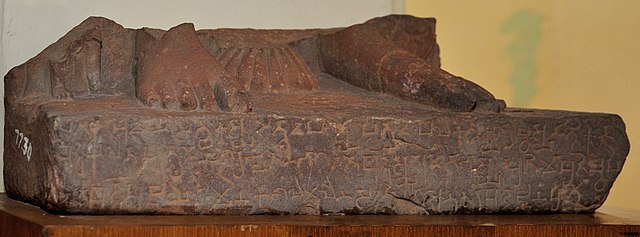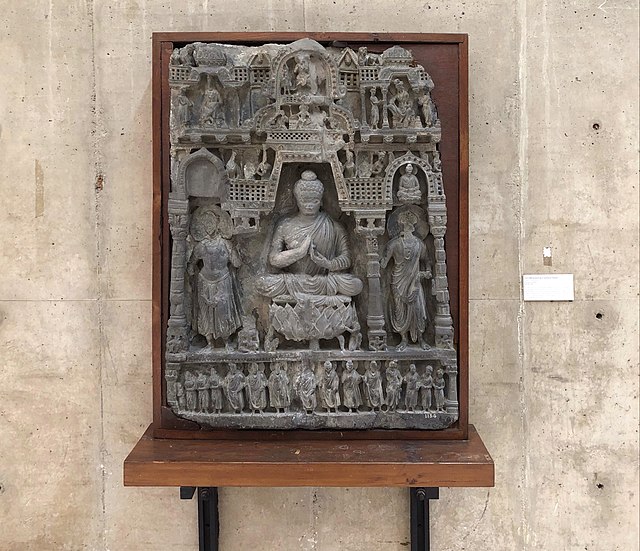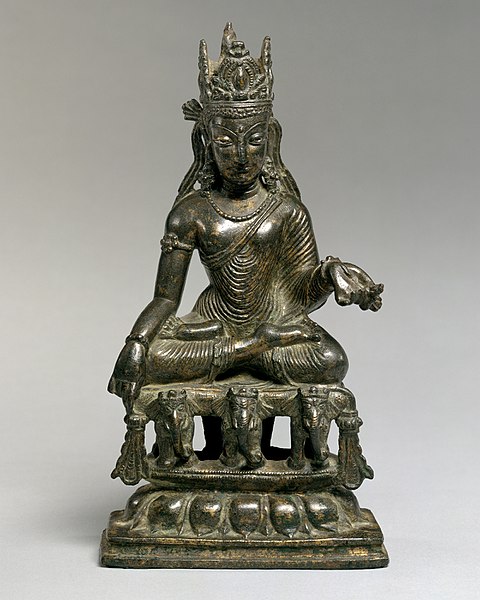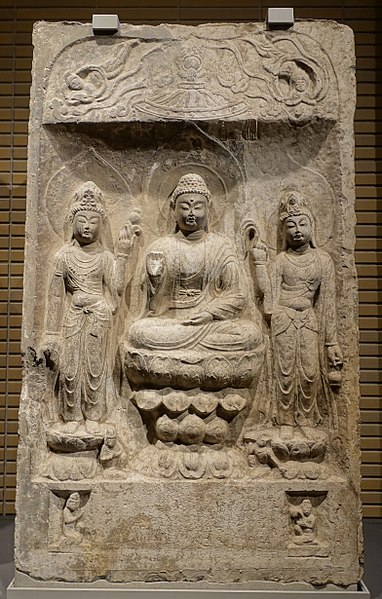Amitābha is the principal Buddha of Pure Land Buddhism. He is also known as Amitāyus, which is understood to be his enjoyment body (Saṃbhogakāya). In Vajrayana Buddhism, Amitābha is known for his longevity, discernment, pure perception, and the purification of aggregates with deep awareness of the emptiness of all phenomena. The name Amitābha means "Infinite Light", and the name Amitāyus means "Infinite Life".
Amitābha statue in gold leaf with inlaid crystal eyes. Tokyo National Museum, Tokyo, Japan
Ming dynasty (1368–1644) statue of Amitābha in Huayan Temple in Datong, Shanxi, China
Buddha Amitābha in Tibetan Buddhism, traditional thangka painting
The Great Buddha of Kamakura in the Kōtoku-in temple
Pure Land Buddhism or Pure Land School is a broad branch of Mahayana Buddhism focused on achieving rebirth in a Pure Land. It is one of the most widely practiced traditions of Buddhism in East Asia.
Inscribed pedestal with the first known occurrence of the name of Amitabha Buddha (c. 153 CE). The Brahmi inscription states "Bu-ddha-sya A-mi-tā-bha-sya"; "Of the Buddha Amitabha."
Gandharan sculpture of Amitabha in Sukhavati, 2nd century CE, from Khyber Pakhtunkhwa, Pakistan.
Bronze sculpture of Aksobhya Buddha, Pakistan (Northwest Frontier Province, Swat Valley), 9th century
Amitabha triad in a niche, Baoqingsi temple, Xi'an, Shaanxi province, China, Tang dynasty, dated 703 CE.

